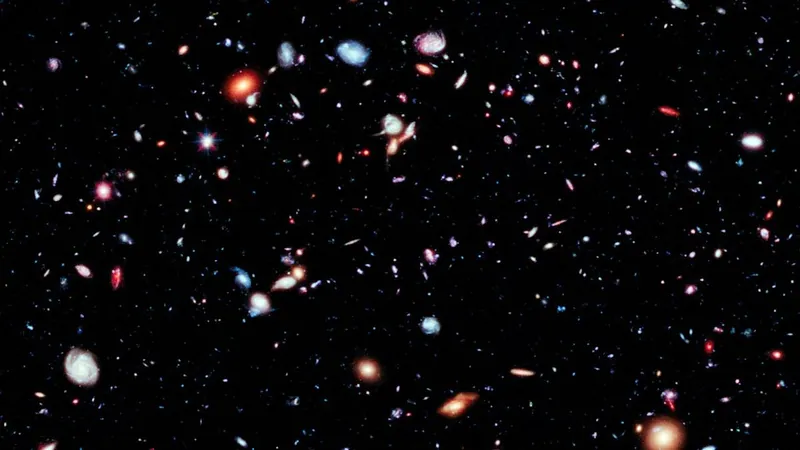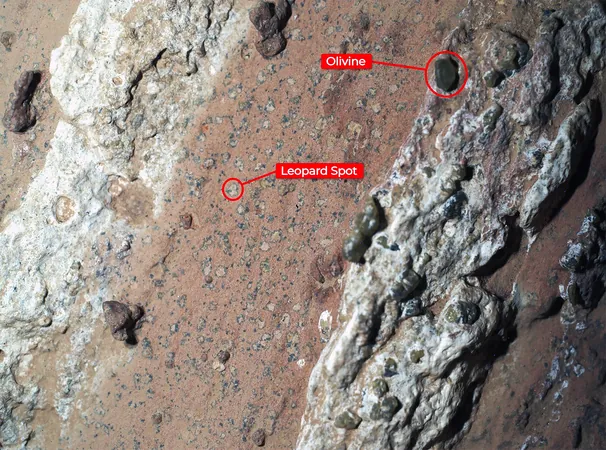
Ancient Radio Signals from a Distant Galaxy Cluster Could Change Our Understanding of the Universe
2025-07-01
Author: Yan
In a groundbreaking revelation, astronomers exploring a distant galaxy cluster have detected ancient radio signals that may unlock secrets about the early universe's formation.
A Cosmic Discovery: The Signals That Spanned 10 Billion Years
While investigating the galaxy cluster known as SpARCS1049, scientists uncovered faint and enigmatic radio waves, as detailed in a study recently released in The Astrophysical Journal Letters. These signals took a staggering 10 billion years to reach Earth, offering a glimpse into a region brimming with high-energy particles and magnetic fields.
What Are Mini-Halos and Why Do They Matter?
The researchers identified these radio waves as emanating from what are termed 'mini-halos'—previously undetected formations deep in space. Mini-halos are described as faint clusters of charged particles that emit both radio and X-ray waves, typically found in the areas between galaxies.
Scientists Weigh In: The Significance of the Discovery
Roland Timmerman, a co-author from the Institute for Computational Cosmology at Durham University, expressed awe at this discovery, stating its importance for understanding both the history and evolution of the universe. "The strength of the radio signal at this distance is astonishing. It indicates that these energetic particles and their generating processes have been influencing galaxy clusters for nearly the entire history of our universe," he shared.
How Are These Mini-Halos Formed?
The astronomers propose two potential explanations for the formation of these mini-halos. Firstly, supermassive black holes at the centers of galaxies could be releasing high-energy particles into the cosmos. However, the mystery lies in how these particles manage to escape such powerful gravitational forces.
Alternatively, cosmic particle collisions—occurring when hot plasma-filled charged particles collide at near-light speeds—could also be responsible, shattering these particles and enabling us to observe them from Earth.
What This Means for Future Research
This groundbreaking discovery suggests that black holes or cosmic collisions may have been energizing galaxies much earlier than previously thought. With the development of advanced telescopes like the Square Kilometer Array, astronomers are poised to detect even fainter signals.
A New Chapter in Cosmic Exploration
Co-lead author Julie Hlavacek-Larrondo from the University of Montreal emphasized that this finding is just the tip of the iceberg in understanding the universe. "We are merely scratching the surface of the energy present in the early universe. This discovery offers a fresh perspective on the growth and evolution of galaxy clusters, shaped by both black holes and high-energy particle physics," she stated.





 Brasil (PT)
Brasil (PT)
 Canada (EN)
Canada (EN)
 Chile (ES)
Chile (ES)
 Česko (CS)
Česko (CS)
 대한민국 (KO)
대한민국 (KO)
 España (ES)
España (ES)
 France (FR)
France (FR)
 Hong Kong (EN)
Hong Kong (EN)
 Italia (IT)
Italia (IT)
 日本 (JA)
日本 (JA)
 Magyarország (HU)
Magyarország (HU)
 Norge (NO)
Norge (NO)
 Polska (PL)
Polska (PL)
 Schweiz (DE)
Schweiz (DE)
 Singapore (EN)
Singapore (EN)
 Sverige (SV)
Sverige (SV)
 Suomi (FI)
Suomi (FI)
 Türkiye (TR)
Türkiye (TR)
 الإمارات العربية المتحدة (AR)
الإمارات العربية المتحدة (AR)